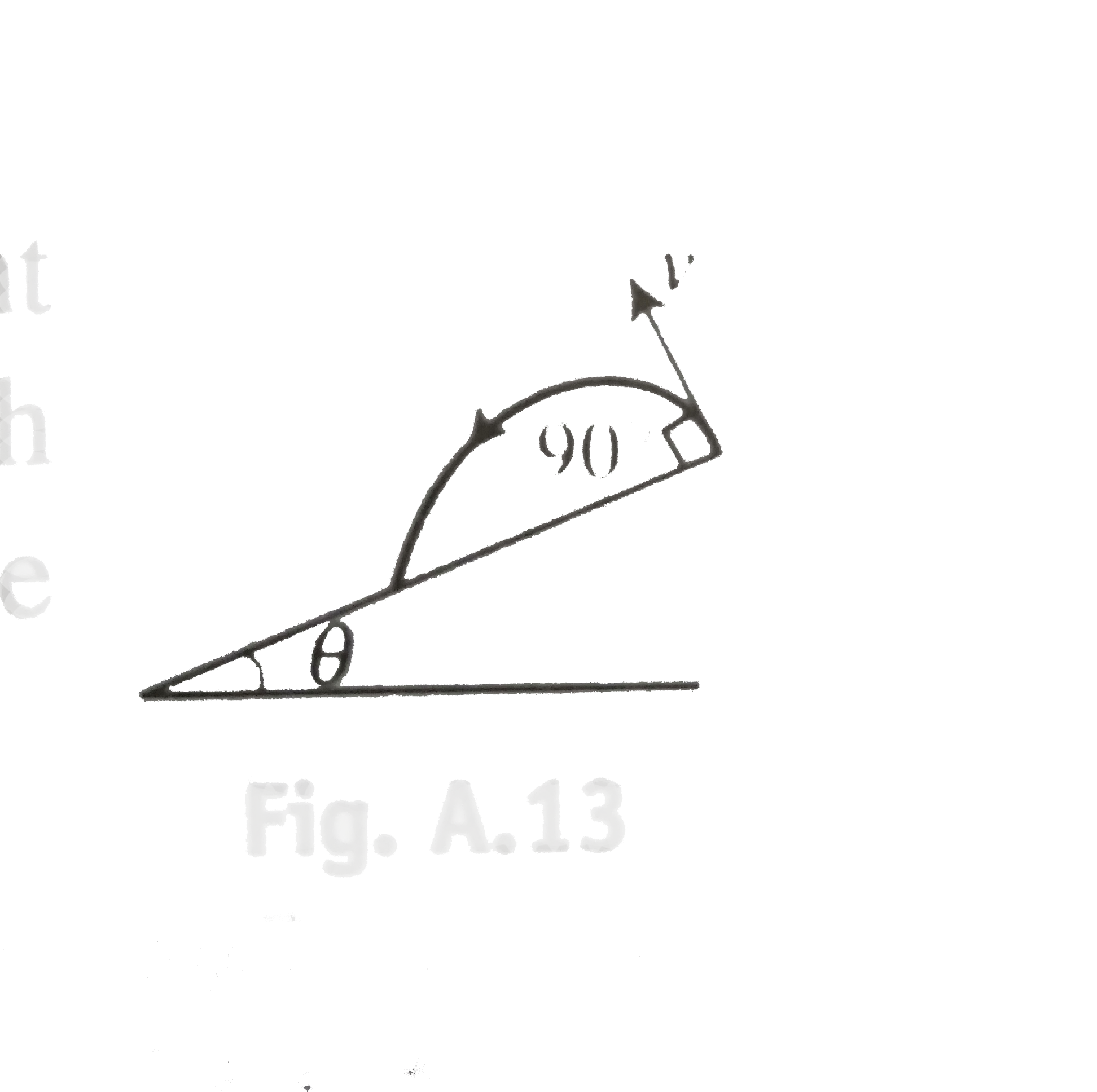A particle is executing vertical SHM about the highest point of a projectile. When the particle is at the mean position, the projectile is fired from the ground with velocity u at an angle θ with the horizontal.The projectile hits the oscillating particle .Then, the possible time period of the particle is
usinθg
2usinθg
2usinθ3g
all the above
The correct Answer is:D
To solve the problem, we need to analyze the motion of both the projectile and the particle performing Simple Harmonic Motion (SHM).
1. Understanding the Motion of the Projectile:
The projectile is launched from the ground with an initial velocity u at an angle θ with the horizontal. The time of flight T for a projectile is given by the formula:
T=2usinθg
where g is the acceleration due to gravity.
2. Finding the Time to Reach Maximum Height:
The time taken to reach the maximum height (where the projectile will hit the oscillating particle) is half of the total time of flight:
tmax height=T2=usinθg
3. Understanding the SHM of the Particle:
The particle is executing vertical SHM about the highest point of the projectile. The mean position of the particle corresponds to the equilibrium position in SHM, and it oscillates about this point.
4. Condition for Collision:
The projectile will hit the particle when it reaches its maximum height. For the collision to occur, the time taken by the projectile to reach its maximum height must equal the time taken for the particle to reach its mean position.
5. Relating Time Period of SHM to Time of Flight:
The time period Tp of the SHM can be related to the time taken to reach the maximum height of the projectile:
Tp=2×tmax height=2×usinθg
Thus, the time period of the particle performing SHM is:
Tp=2usinθg
Conclusion:
The possible time period of the particle is given by:
Tp=2usinθg
The projectile is launched from the ground with an initial velocity u at an angle θ with the horizontal. The time of flight T for a projectile is given by the formula:
T=2usinθg
where g is the acceleration due to gravity.
The time taken to reach the maximum height (where the projectile will hit the oscillating particle) is half of the total time of flight:
tmax height=T2=usinθg
The particle is executing vertical SHM about the highest point of the projectile. The mean position of the particle corresponds to the equilibrium position in SHM, and it oscillates about this point.
The projectile will hit the particle when it reaches its maximum height. For the collision to occur, the time taken by the projectile to reach its maximum height must equal the time taken for the particle to reach its mean position.
The time period Tp of the SHM can be related to the time taken to reach the maximum height of the projectile:
Tp=2×tmax height=2×usinθg
Thus, the time period of the particle performing SHM is:
Tp=2usinθg
The possible time period of the particle is given by:
Tp=2usinθg
Similar Questions
A particle is fired from a point on the ground with speed u making an angle θ with the horizontal.Then
View SolutionA particle is projected from the ground with velocity u making an angle θ with the horizontal. At half of its maximum heights,
View SolutionA projectile is fired from the origin with a velocity v0 at an angle θ with x-axis. The speed of the projectile at an altitude h is .
View SolutionA particle is projected form ground with velocity u ar angle θ from horizontal. Match the following two columns.

View SolutionA particle is fired with velocity u making angle θ with the horizontal.What is the change in velocity when it is at the highest point?
View SolutionA particle of mass m is projected form ground with velocity u making angle θ with the vertical. The de Broglie wavelength of the particle at the highest point is
View SolutionA projectile is thrown with velocity v at an angle θ with the horizontal. When the projectile is at a height equal to half of the maximum height,.
The vertical component of the velocity of projectile is.
View SolutionA particle is projected from ground with velocity 3ˆi+4ˆj m/s. Find range of the projectile :-
View SolutionA projectile is fired with a velocity v at right angle to the slope inclined at an angle θ with the horizontal. The range of the projectile along the inclined plane is

View SolutionA projectile is fired from level ground at an angle θ above the horizontal. The elevation angle ϕ of the highest point as seen from the launch point is related to θ by the relation.
View Solution
